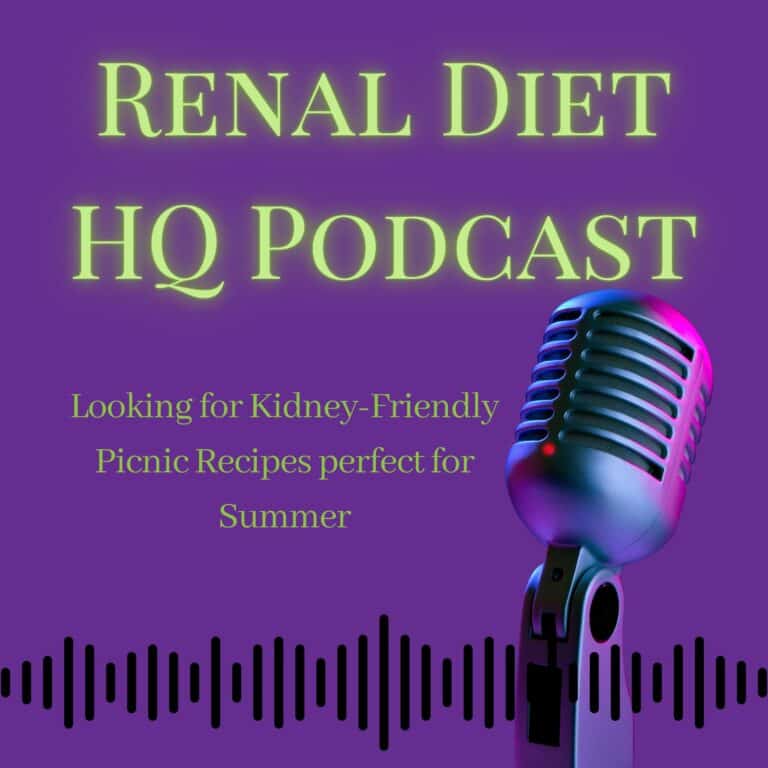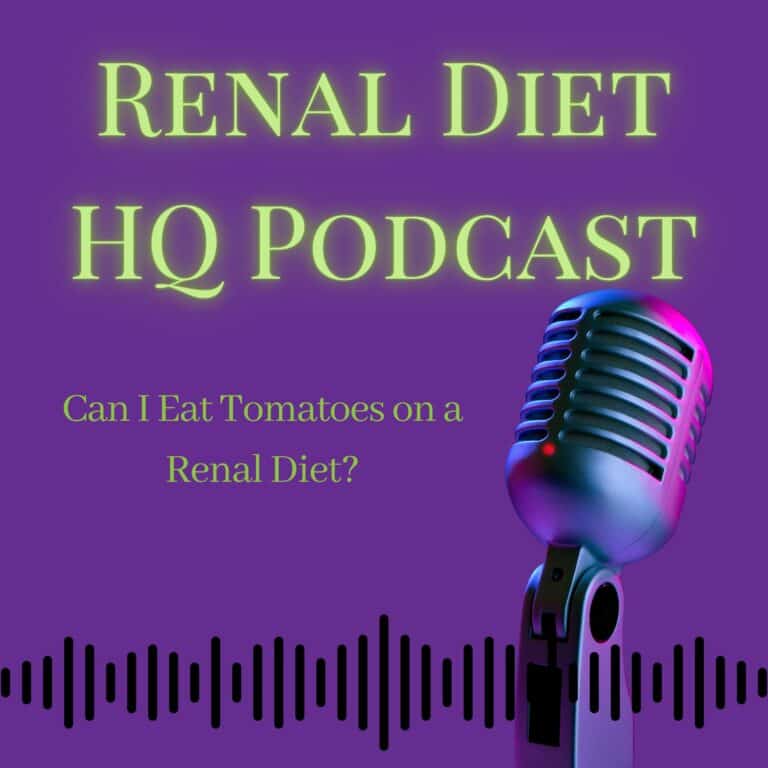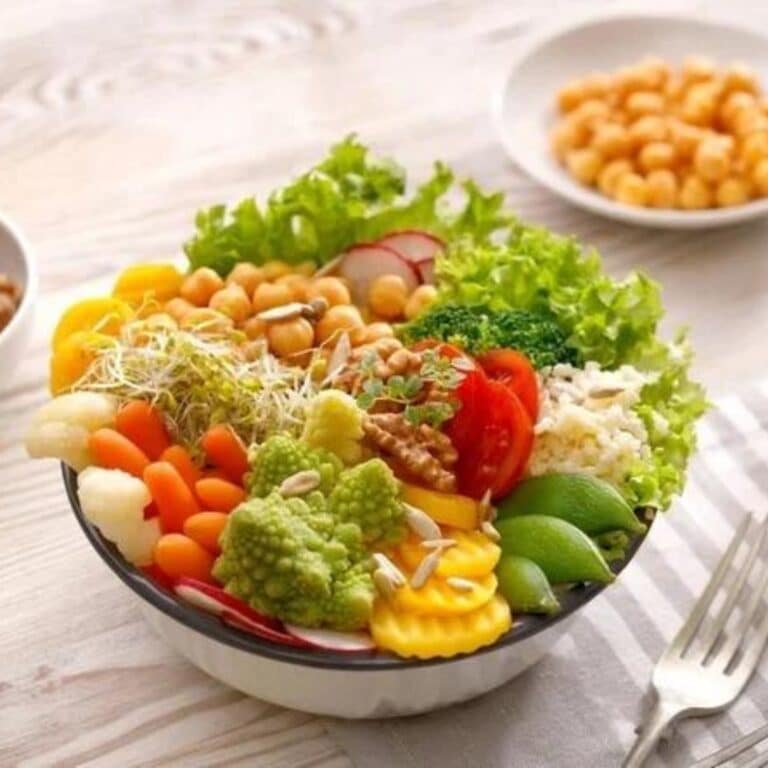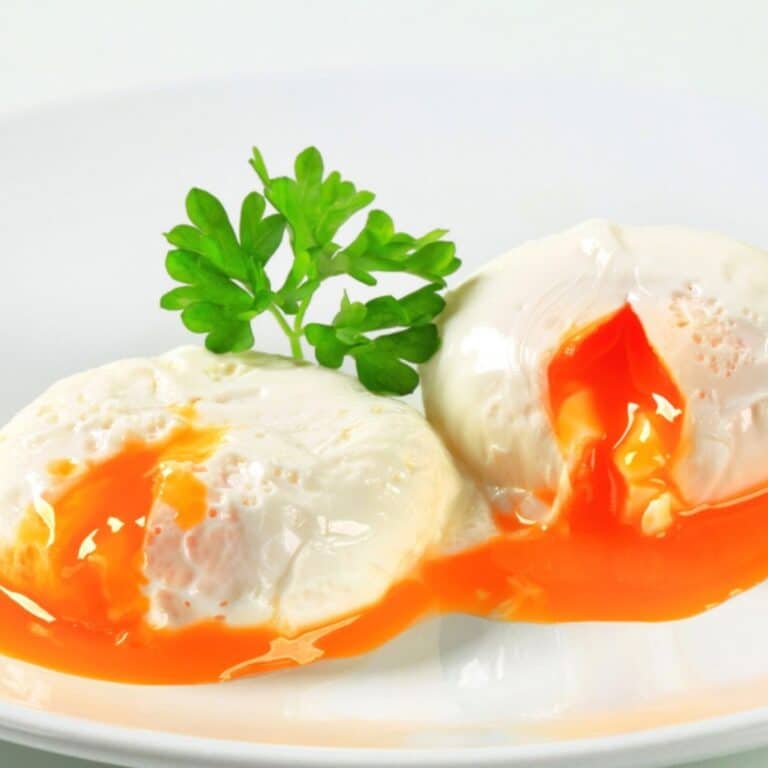Renal Restricted Diet
You're embarking on a renal restricted diet, and it's crucial to tailor your intake for your kidneys' health. You'll need to monitor nutrients like sodium, potassium, and phosphorus closely.
This guide is compassionate and detailed, designed for those who have Chronic Kidney Disease. Let's navigate this diet together, making informed choices that enhance your well-being and support your journey toward a healthier life with CKD.

Jump to:
- Key Takeaways
- Understanding Sodium Limits
- Managing Potassium Intake
- Controlling Phosphorus Levels
- Adjusting Protein Consumption
- Fluid Intake Guidelines
- Recognizing High-Sodium Foods
- Identifying High-Potassium Foods
- Limiting High-Phosphorus Foods
- FAQs for Renal Restricted Diet
- Renal Restricted Diet For Your Kidney Health
Key Takeaways
- Sodium, potassium, phosphorus, and protein are minerals that need to be monitored in a renal restricted diet for kidney disease patients.
- Monitoring sodium intake can help regulate blood pressure, fluid balance, and prevent complications such as heart failure and shortness of breath.
- Potassium intake should be limited to maintain regular heartbeat and muscle function, and to prevent muscle weakness and irregular heartbeat.
- Phosphorus intake should be monitored to prevent bone weakening, calcium deposits in blood vessels, and complications in organs and muscles for people with kidney disease.
For More Recipes and Ideas --->> Get Your Free Meals and Recipes That Are Perfect for Pre-Dialysis Diets, Pre-Dialysis with Diabetes, or Dialysis Diets.
Understanding Sodium Limits
You need to be conscious of your sodium intake, as your kidneys are responsible for filtering excess amounts from your blood.
Consuming too much sodium can lead to serious complications such as high blood pressure and fluid retention if you want healthy kidneys and to avoid advanced kidney disease.
Sodium's Health Implications
While managing your kidney health, it's vital to understand that consuming too much sodium can exacerbate kidney disease and lead to serious health complications. Understanding sodium's effects is crucial, as it plays a significant role in maintaining fluid balance, muscle function, and nerve operations.
However, sodium's impact on blood pressure is particularly concerning for those with kidney disease, as it can hasten kidney disease progression.
Consider these points for better health management:
- Sodium and Fluid Balance: Excess sodium disrupts the delicate fluid balance, leading to swelling and hypertension.
- Sodium's Role in Muscle Function: Imbalance can cause cramping and fatigue.
- Sodium and Kidney Disease Progression: Monitoring intake is essential to slow disease advancement and protect your remaining kidney function.
Managing Sodium Intake
Managing your sodium intake is crucial, as it helps maintain proper fluid balance and can prevent complications from kidney disease. Understanding sodium guidelines is vital for your well-being.
Aim to limit sodium, which is essential for kidney health, by choosing fresh produce and unprocessed meats. Be mindful of potassium and muscle function, excess can disrupt your heart rhythm.
Managing phosphorus levels is also key; too much may weaken bones and strain your cardiovascular system. Moreover, moderating protein intake in CKD reduces the kidneys' workload.
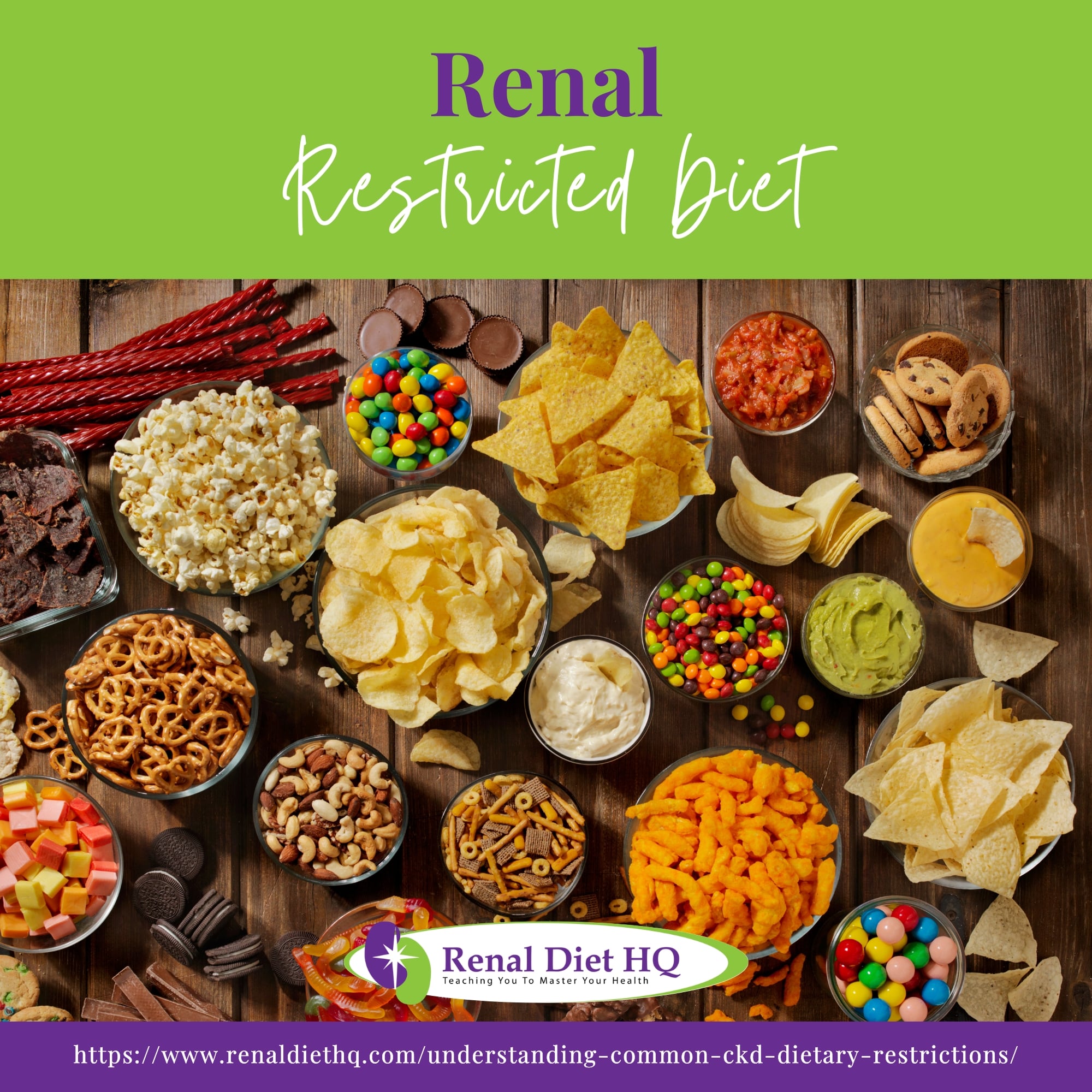
Managing Potassium Intake
You need to be mindful about the foods you choose to keep your potassium levels in check, as your kidneys struggle to maintain the balance.
Opting for low-potassium options can significantly reduce the risks of hyperkalemia, which poses serious threats to your heart health.
It's crucial to work closely with your renal dietitian to identify safe foods and create a diet plan that supports your well-being.
Low-Potassium Food Choices
Identify low-potassium alternatives to incorporate into your meals, such as apples, berries, and cauliflower, to effectively manage your potassium intake. When crafting low potassium recipes, it's crucial to consider options that minimize potassium-rich fruits while still providing nutritional balance.
Look for protein alternatives that are less taxing on your kidneys, and explore low sodium seasoning options to enhance flavor without adding unnecessary potassium or sodium.
- Low Sodium Seasoning Options: Use herbs, vinegar, and spices instead of salt.
- Protein Alternatives: Incorporate lean meats, egg whites, or plant-based proteins.
- Fluid Restriction Tips: Measure and monitor your fluid intake diligently.
Your dedication to serving those with kidney concerns is admirable, and integrating these suggestions can make a significant difference in their health management.
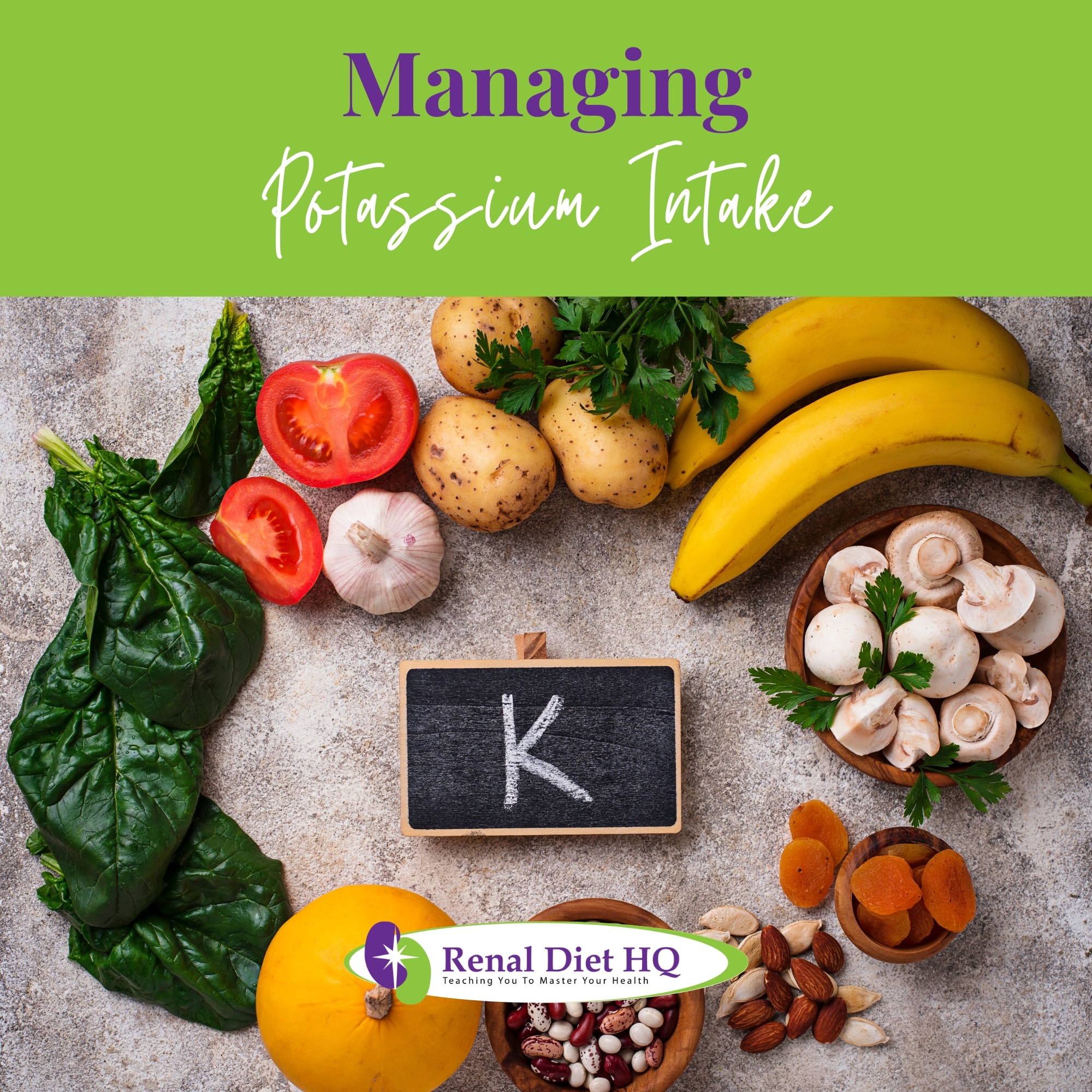
Avoiding Hyperkalemia Risks
To maintain your kidney health and prevent the risks associated with hyperkalemia, it's vital to keep a close eye on your potassium intake. Hyperkalemia prevention requires an understanding of potassium management, especially when your kidneys are compromised.
Limiting potassium-rich foods is key, however, this must be balanced with your body's needs for other minerals like phosphorus, which is crucial for bone health.
Carefully select your meals, prioritizing phosphorus control to support your bones while avoiding excess potassium that could harm your heart.
Partner with a renal dietitian who can guide you through this delicate balance, ensuring you're nourishing your body without overburdening your kidneys.
Controlling Phosphorus Levels
As a person living with kidney disease, you're likely aware that controlling your phosphorus intake is crucial for preventing bone weakness and calcification in your vessels. You'll need to avoid phosphorus-rich foods like dairy, nuts, and certain meats, which can contribute to elevated levels in your body.
Your healthcare team may recommend phosphate binders to help manage your phosphorus levels effectively on the kidney-friendly diet.
Phosphorus-Rich Foods Avoidance
For your kidney health, you'll need to steer clear of foods high in phosphorus, such as certain dairy products, nuts, and processed meats. Managing phosphorus intake is crucial to prevent its detrimental effects on bone and cardiovascular health. It's important to seek phosphorus-rich foods alternatives that are friendlier to your renal diet.
- Explore plant-based milk options like almond or rice milk instead of cow's milk.
- Opt for fresh fruits and vegetables over processed snacks that often contain added phosphates.
- Consult with your healthcare provider about phosphorus binders, which can help control phosphorus absorption from your diet.
Phosphate Binder Usage
While you're minimizing high-phosphorus foods, you'll also want to consider phosphate binders as a strategy to control phosphorus levels in your body. These binders work by attaching to phosphorus in the foods you eat, making it less absorbable.
When exploring phosphate binder alternatives, it's important to maintain a delicate balance. For instance, some binders can affect sodium and fluid balance, which necessitates careful fluid management strategies.
If you're on protein intake restrictions, ensure the binder doesn't interfere with your nutritional needs. If you're taking dietary potassium supplements, select a binder that won't exacerbate potassium levels.
Always consult with your healthcare provider to tailor binder choice to your specific health profile, optimizing your care and supporting those you serve in their health journey.
Adjusting Protein Consumption
You need to be aware that your protein intake directly influences your kidney health, especially when managing Chronic Kidney Disease (CKD).
Following protein intake guidelines tailored to your specific stage of CKD can help alleviate symptoms and slow disease progression.
It's essential to consult with your healthcare professional to establish an appropriate protein regimen that supports your body's needs without overburdening your kidneys on the kidney diet.
Protein Intake Guidelines
Often, you'll need to adjust your protein consumption as your kidney disease progresses, ensuring you don't overburden your kidneys. When you follow protein intake recommendations, you can manage protein and CKD progression effectively, which is vital for maintaining kidney function and easing symptoms. It's important to select the right protein sources, as high-quality proteins are easier on your kidneys.
- Tailor your diet to include the amount of protein suitable for your stage of kidney disease.
- Choose protein sources that are kidney-friendly, such as lean meats, egg whites, and legumes.
- Monitor your diet to balance protein and symptom management, preventing undue stress on your kidneys.
Your commitment to these guidelines is a profound service to your health and well-being.
Managing CKD Symptoms
In managing your symptoms of Chronic Kidney Disease (CKD), adjusting your protein intake is crucial for reducing the strain on your kidneys with a kidney diet. It's essential to choose high-quality protein sources and to understand the appropriate amount for your condition.
Reading food labels helps you monitor protein content, and meal planning services can simplify the process of adhering to your dietary needs.
| Fluid Balance Tips | Protein Sources | Reading Food Labels |
|---|---|---|
| Monitor intake | Lean meats | Check serving sizes |
| Limit salt | Fish | Identify protein |
| Manage thirst | Legumes | Note additives |
Fluid Intake Guidelines
As you navigate your renal restricted diet, it's crucial to monitor your fluid intake carefully. Consuming more fluid than your body can process may lead to fluid retention, which can exacerbate heart and lung pressure and contribute to swelling.
Monitor Fluid Consumption
Considering your individual fluid allowance, it's essential you track your daily consumption to prevent fluid overload and protect your kidneys. Accurate fluid intake monitoring is a critical component of managing your health.
As you serve yourself and others, bear in mind the importance of:
- Fluid tracking: Maintain a log of your fluid intake to ensure you stay within your prescribed limits.
- Sodium substitutes: Opt for herbs and spices rather than salt to manage thirst and fluid retention.
- Potassium supplements and protein alternatives: Consult with your healthcare provider for safe options that won't compromise your renal diet.
Fluid Retention Risks
You'll need to be mindful of your daily fluid intake to prevent the risks associated with fluid retention due to compromised kidney function. Understanding the fluid retention causes, such as excess sodium disrupting fluid balance, is crucial. It's vital in managing fluid intake effectively.
Fluid overload risks can exacerbate heart and lung pressure, leading to serious health complications. By adhering to fluid restriction guidelines, you can help maintain a delicate balance.
Aim to limit sodium intake, as it's intimately connected to fluid retention. By doing so, you'll support sodium and fluid balance, promoting overall well-being.
Recognizing High-Sodium Foods
You might be surprised to find that sodium lurks in many foods you consume daily, often in significant amounts. To manage your kidney health effectively, it's crucial to identify hidden sources of salt, such as in breads, cereals, and canned goods.
Identifying Hidden Salt Sources
Awareness of hidden salt sources in your diet is crucial for maintaining a kidney-friendly meal plan. You might be sodium sensitive, and even seemingly healthy foods can contribute to your overall sodium intake. Look beyond the salt shaker and consider these potential culprits:
- Processed foods: Often packed with sodium for preservation, even if they don't taste salty.
- Condiments and sauces: Small amounts can add a significant sodium punch.
- Breads and rolls: Surprisingly high in sodium, which accumulates throughout the day.
Adopting potassium-rich recipes, utilizing phosphorus binders, and exploring protein alternatives can help manage your kidney health.
Compassionately, it's important to serve your well-being by scrutinizing labels and making informed choices to limit these hidden salt sources.
Avoiding Sodium-Laden Products
In managing your kidney health, it's crucial to identify and steer clear of high-sodium foods that can exacerbate your condition. Understanding sodium sources is fundamental in avoiding sodium-laden products. Sodium's impact on blood pressure is particularly significant if you have kidney issues, as it can contribute to hypertension and further strain your kidneys.
Be aware that sodium in processed foods is often much higher than in fresh produce. Similarly, sodium in restaurant meals can be excessive and hard to control. As you navigate your diet, seek sodium alternatives like herbs and spices to enhance flavor without adding sodium.
Identifying High-Potassium Foods
As you navigate your renal diet, it's vital to recognize which foods are high in potassium to manage your intake effectively. Potassium-rich items like bananas, potatoes, and spinach can exacerbate your condition if not monitored carefully.
Spotting Potassium-rich Items
You'll need to be vigilant when grocery shopping, as many common foods, such as bananas and potatoes, are loaded with potassium. Understanding potassium levels is crucial for your heart health and kidney function.
When managing a renal restricted diet, spotting phosphorus-rich foods and monitoring protein intake are essential to mitigate the progression of kidney disease. Managing fluid intake is a key component of your dietary regimen.
Here's a quick guide to help you identify high-potassium items:
- Fruits & Vegetables: Bananas, oranges, and tomatoes are potassium-dense.
- Dairy Products: Milk and yogurt have high potassium content.
- Protein Sources: Red meat, chicken, and fish are significant sources.
Reducing Dietary Potassium
Monitor your consumption of high-potassium foods like avocados, sweet potatoes, and spinach to better manage your kidney health. It's essential for reducing potassium in your diet to prevent hyperkalemia, a condition that can have serious cardiac implications. Potassium-rich foods, while generally healthy, can be detrimental when your kidneys aren't fully functional.
Employ potassium intake strategies such as choosing low potassium diet options, which include apples, berries, and rice. Be vigilant in identifying hidden sources of potassium in processed foods and be cautious with salt substitutes, which often contain potassium chloride.
Limiting High-Phosphorus Foods
You need to be mindful of your phosphorus intake as excessive amounts can lead to weakened bones and harmful calcifications in your body.
Identifying low-phosphorus options is crucial in managing your kidney health and maintaining a balanced diet.
The impact of phosphorus on your bones is significant, so working with a renal dietitian to choose the right foods is essential for your well-being.
Identify Low-Phosphorus Options
To keep your phosphorus levels in check, it's essential to cut back on foods like cheese, nuts, and processed meats, which are high in this mineral. When you're engaged in low phosphorus meal planning, begin by seeking phosphorus-free recipe ideas that prioritize fresh produce and lean proteins.
Consider these low phosphorus snack options to maintain variety in your diet while managing phosphorus levels:
- Fresh fruits like apples, berries, and pears.
- Vegetables such as bell peppers, carrots, and cucumbers.
- Rice cakes topped with avocado or a small amount of natural peanut butter.
Understanding phosphorus restrictions and incorporating these changes compassionately can support the well-being of those you serve, ensuring they enjoy a balanced diet while adhering to their health requirements.
Phosphorus Impact on Bones
Considering the importance of bone health, especially in the context of kidney disease, it's crucial to limit high-phosphorus foods to prevent weakening your bones or causing you to develop bone disease. When managing phosphorus intake, you're not only supporting your kidney function but also guarding against osteoporosis.
Dietary phosphorus restrictions help maintain a crucial balance that prevents the leaching of calcium from your bones, a process that can lead to fragility and increased fracture risk.
Here's a table to guide you:
| Food Group | Phosphorus Content | Bone Health Impact |
|---|---|---|
| Dairy | High | Negative |
| Beans | High | Negative |
| Nuts | High | Negative |
| Whole Grains | Moderate to High | Manageable with Care |
FAQs for Renal Restricted Diet
When you dine out, start with menu research to identify meals with lower sodium content. Stick to your fluid intake guidelines, and choose grilled options that are typically lower in unwanted additives.
Practice portion control to manage your nutrient intake. Being mindful of these choices helps you maintain your health while enjoying a meal out.
You can still savor sweets by choosing kidney-friendly options. Opt for sugar substitutes, practice portion control, and indulge in fruit sorbets. Prepare homemade treats to manage ingredients, and consider dairy alternatives.
It's all about picking the right treats and being mindful of amounts. These swaps help you enjoy desserts while caring for your kidneys. Remember, balance is key, and it's another way to serve your health needs with compassion and precision.
To cope with cravings, you can try substitutes that align with your diet or practice portion control to satisfy the urge without overindulging.
Be mindful of emotional eating, snack mindfully and consider your body's needs.
Joining support groups can provide camaraderie and shared strategies for managing cravings.
Renal Restricted Diet For Your Kidney Health
Embarking on a renal restricted diet can be challenging, but you're taking a significant step towards safeguarding your kidney health. When you manage sodium, potassium, phosphorus, and protein, you'll help ease the burden on your kidneys.
Remember to read labels, choose fresh foods, and consult your dietitian. Your vigilance and dedication are crucial in this journey, and every mindful choice you make nourishes your body and enhances your quality of life. If you have any questions, please speak to your health professionals.
Stay strong, you've got this.






